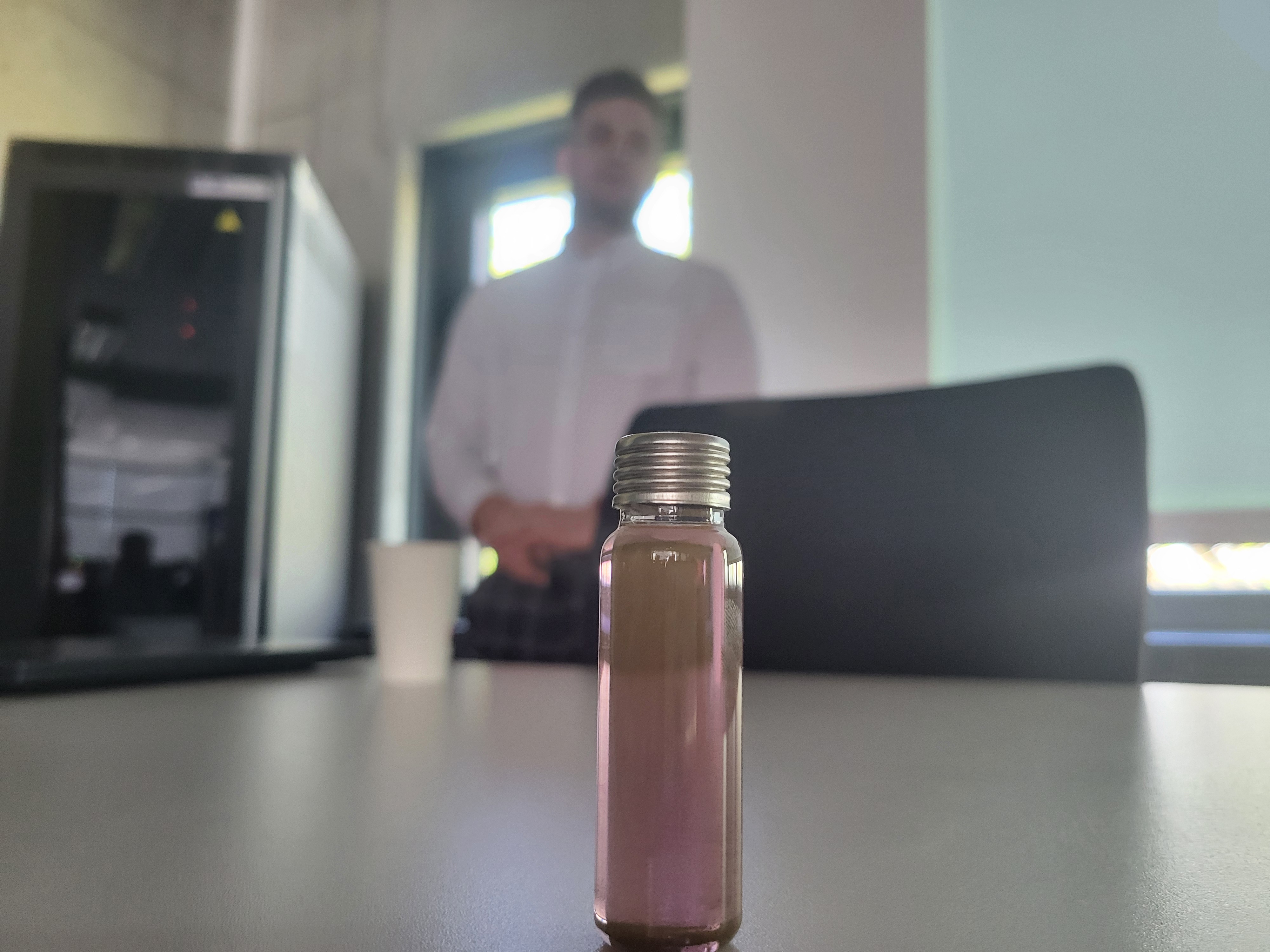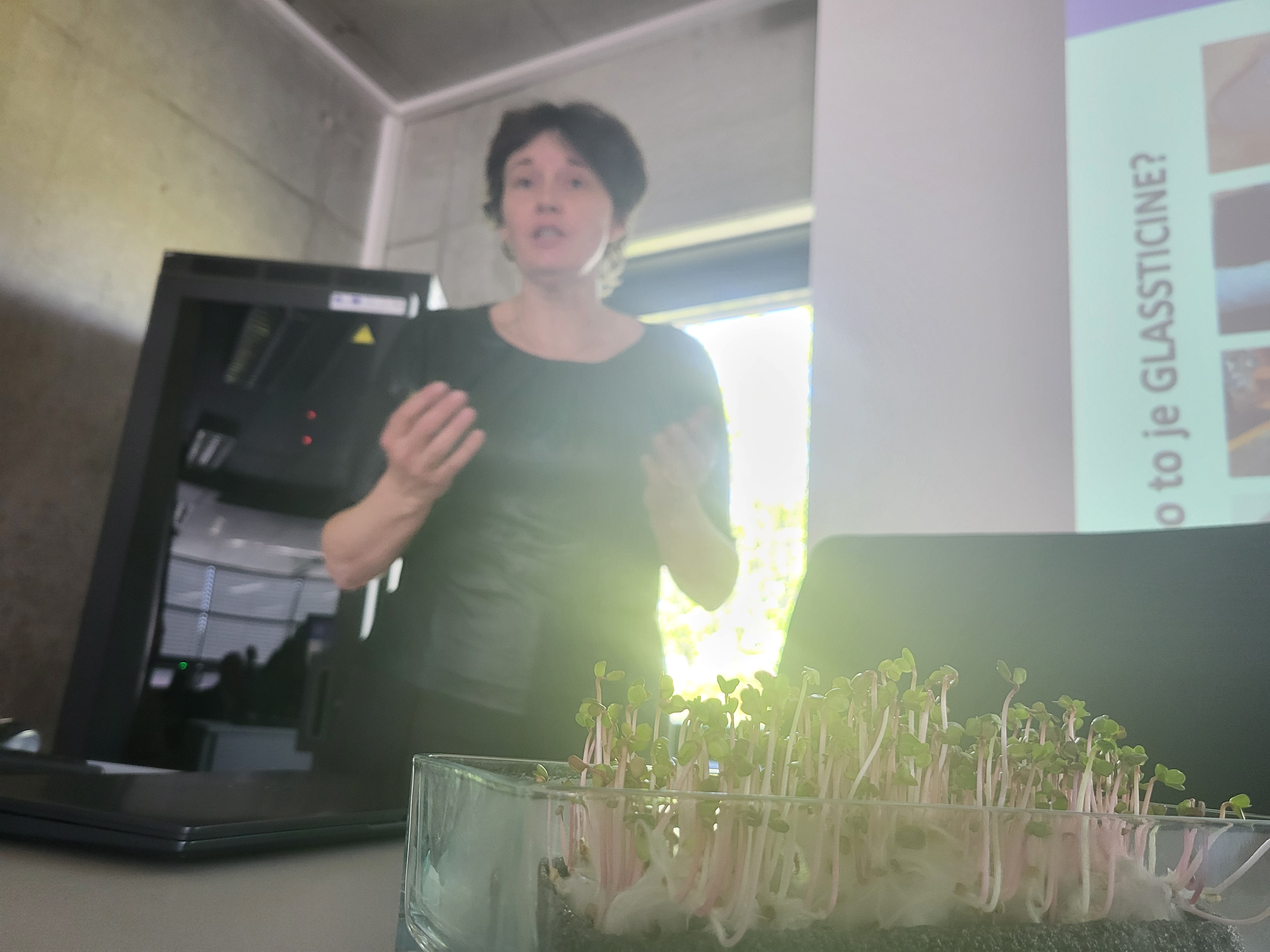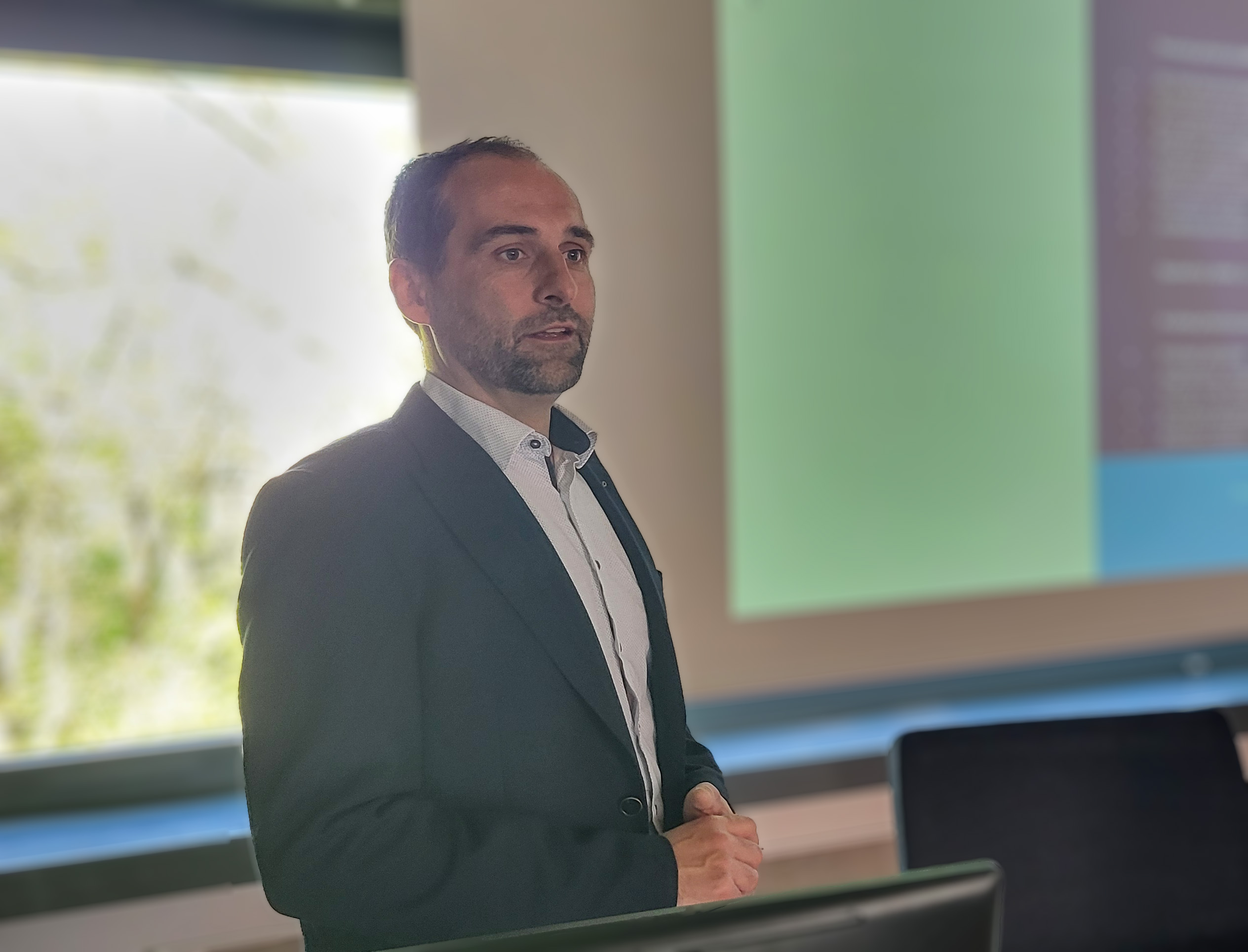AMIA meeting: companies and scientists look for ways to collaborate
30. 4. 2025
How to bring innovation from the lab to the business? At the AMIA meeting, scientists and company representatives met together to look for concrete ways to collaborate. Discussions on 3D printing, nanomaterials or recyclates showed that the key to success is not only technology, but above all open communication.
Laboratories open doors to industry
The morning session started with a series of expert lectures that offered a varied view of current research in the field of materials technology. The possibilities of 3D printing of ceramic materials or surface treatment with hydrophobic coatings, which significantly increase their durability, were presented. One of the papers was interesting for research on inorganic nanofibers for targeted drug delivery.

The programme continued with a presentation focused on the preparation of nanoalloys using laser technologies and research into the possibilities of using waste glass recyclates. Other presentations included approaches to reinforcing nanofibers with natural substances as well as methods for producing fibers from recycled polymers.
"I was interested in the technology for targeted drug delivery," Ondřej Moš, managing director of TUC TUL, commented later.
"In terms of technology transfer at TUL, some of the results presented are either too much in the basic research phase or, on the contrary, too custom-made. Such technologies are difficult to scale up, but we are looking for them and monitoring developments," he added.
"For example, we have been following laser ablation research for a long time. And in the glass recycling project, we founded Glassiteca and have a material with a wide range of applications."

Afternoon in the sign of applications
The afternoon part of the programme brought further impulses. Projects aimed at supporting SMEs in the field of digitisation and research into future materials were presented, including the new SUPPORT4SME project.
This project, a collaboration between the Technical University of Liberec and the Technical University of Chemnitz, connects innovation with practice within the Czech-Saxon region. It offers an interdisciplinary network of expert scientists who help companies develop new technologies, implement them effectively and take their business to the next level.
A bridge between research and practice
The follow-up lecture focused on current trends in 3D printing, including technological innovations. The next presentation offered practical examples of the use of artificial intelligence in collaboration between companies and research. Grant schemes and other opportunities that can significantly help companies to put innovation into practice were also presented.
"For me, the afternoon is always more beneficial, especially the news from CXI and the space for networking," says Miroslav Ležák, project manager at Praktik system s.r.o., who is interested in new 3D printing methods, current developments in artificial intelligence and machine learning. He also likes the opportunities offered by the Microscopy Laboratory at CXI TUL.
"Science needs industry and industry needs science. Meetings like the one within the AMIA Association are very important for us," says Adam Blažek, Director of Industry Relations. "Today, a whole range of technological solutions are emerging from laboratories, from new materials to advanced recycling methods. Thanks to the dialogue with companies, we can better adapt these solutions to real needs and effectively translate them into practice. We are pleased that specific opportunities for cooperation have been formed within this meeting, and we believe that the activities will help accelerate this transfer."
Reflection on research and practice cooperation
The meeting also offered a space for reflection on the experience of research-industry linkage so far.
"We would be happy to cooperate," said Jan Braun, who is working on the creation of nanoparticles using lasers. The advantage of this method is that laser-prepared nanoalloys do not have any additional chemicals on their surface that are formed during production.
"The collaboration can also look like if a company needs nanoparticles, for example for use in textiles, we are ready to work together and supply them with a pure form of the material," Braun explained.

Miroslava Rysová, Head of the TUL Tissue Culture Laboratory at CXI TUL, also pointed out the importance of a practical perspective: "For us as scientists who spend most of our time in the laboratory, meeting companies is very valuable. It brings a new perspective. Companies often deal with completely different aspects of materials: shelf-life, thickness, possibilities of combination with other materials, applicability in mechanical production. This practical level is inspiring for us and helps us to adjust our focus."
Marie Stará from the Department of Glass Machinery and Robotics described a similar experience: "Feedback from companies has an impact on design, not only visually but also technically. What is important is what suits them in terms of function, shape or use. We are working with a smaller number of companies so far, so the feedback is not across the board, but in our collaboration with ForestBit, for example, we have developed a specific shape of the tray exactly according to their needs, right down to the final fine-tuned form."




.png)
.jpeg)
.png)
.jpeg)
.png)
.jpeg)
.png)


.png)